

What is the Munsell Color System and How Is It Used Today?
Summary
The Munsell Color System, devised by Albert H. Munsell, categorizes colors based on hue, value, and chroma, offering a structured approach to color perception. Developed in the early 20th century, it remains influential in art, design, and scientific research. This article explores its origins, principles, and modern applications, showcasing its enduring impact on our understanding and use of color.
Reflection Questions
- Reflect on the ways in which the Munsell Color System challenges traditional notions of color perception and classification. How might its emphasis on hue, value, and chroma offer new opportunities for experimentation and expression in your own artwork?
- Explore the intersection between art and science in the development and application of color systems like Munsell’s. How do you see yourself bridging these disciplines in your own creative practice?
- Consider the practical applications of the Munsell Color System in various fields, from art and design to scientific research. How might incorporating this system into your own artistic practice enhance your ability to communicate and evoke emotions through color?
Journal Prompt
Choose a woman artist known for her innovative use of color, such as Emily Carr or Sonia Delaunay, and analyze her work through the lens of the Munsell Color System. Reflect on how her artistic choices align with or challenge the principles of hue, value, and chroma outlined by the Munsell system. How does this analysis deepen your appreciation for her artistic vision and technique?
Color systems play a pivotal role in a multitude of fields—ranging from art and design to scientific research—offering a structured approach to understanding and utilizing color. Among these systems, the Munsell Color System stands out for its unique method of categorizing colors based on three distinct properties: hue, value, and chroma. Developed in the early 20th century by Albert H. Munsell—an American painter and art teacher—this system revolutionized the way color is perceived and applied across various disciplines. In this article, we will delve into the origins of the Munsell Color System, explore its fundamental principles, and examine its contemporary applications—providing insight into how this century-old system continues to influence our interaction with color today.
Origins and Development of the Munsell Color System
A Brief Biography of Albert H. Munsell, the Creator of the Munsell System
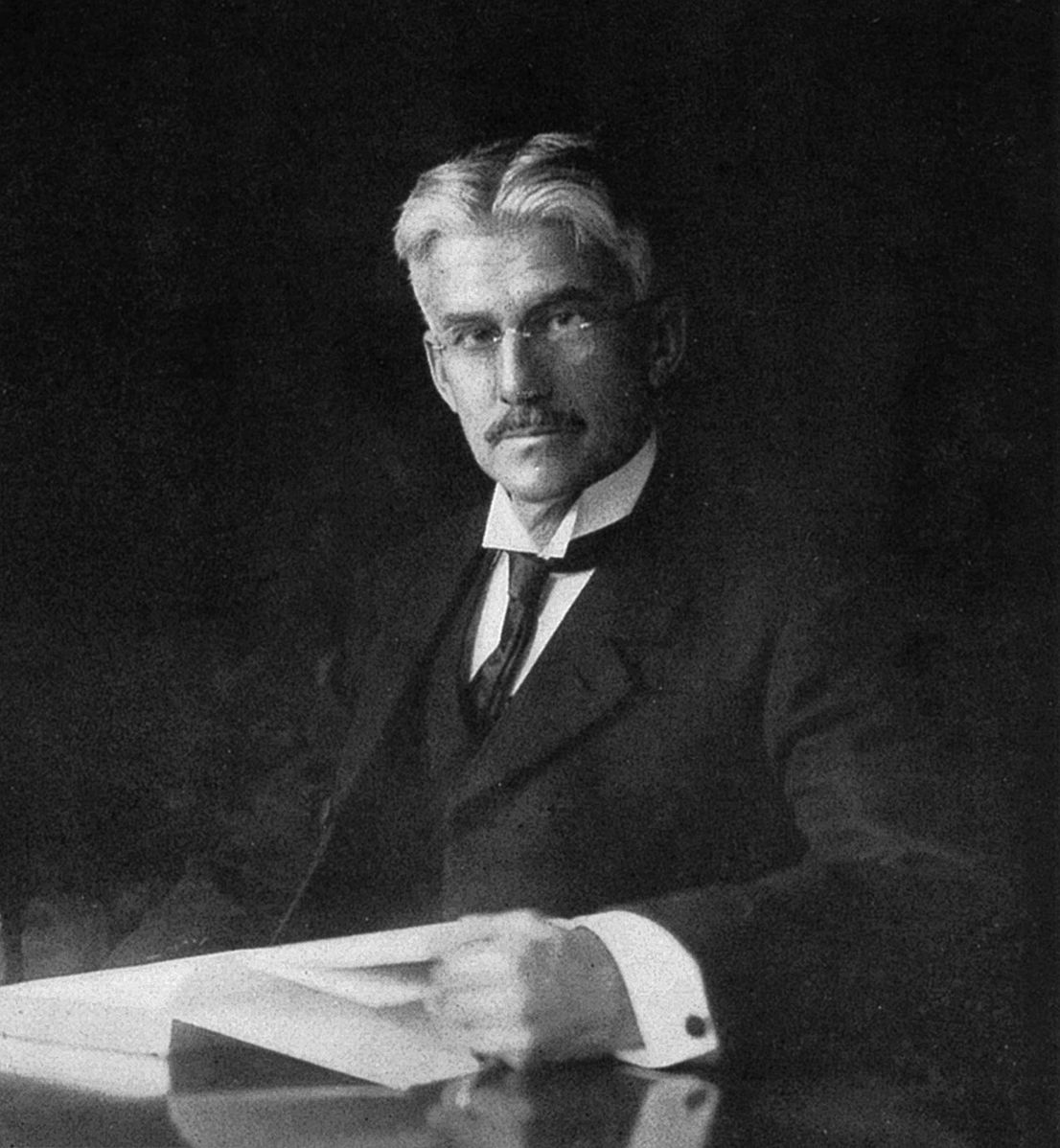

Albert Munsell (1858-1918) was an American artist and art educator deeply interested in the science of color. Born in Boston, Munsell graduated from the Massachusetts Normal Art School and later studied art in Paris.
Throughout his career, he was intrigued by how color is perceived and often found existing color systems inadequate for his needs. This led him to develop his own color system—focusing on a more logical and clear representation of color. He eventually published a book about his notation system—which has since been republished as the Pantone Munsell Book of Color—and founded the Munsell Color Company.
Munsell’s contributions extend beyond the color system. He was also a dedicated teacher and an accomplished artist, with his work and teachings significantly influencing the field of color theory.
Historical Context and Munsell’s Motivation for Developing a New Color Notation System
In the early 20th century—when Munsell was developing his color system—the field of color theory was fragmented with various incomplete and complex systems. Munsell’s motivation stemmed from a desire to simplify and rationalize the way color was organized and communicated.
He aimed to create a system that was easily understandable and applicable in both artistic and scientific contexts. His background as an artist and educator provided him with a unique perspective—focusing on creating a system that was visually intuitive and based on how the human eye perceives color. While revolutionary, Munsell’s system did build on earlier ideas—like those of Philipp Otto Runge.
Fuel your creative fire & be a part of a supportive community that values how you love to live.
subscribe to our newsletter
Key Principles and Innovations Introduced by Munsell
Munsell’s system introduced several key innovations in the understanding and categorization of color. Firstly, it was three-dimensional, considering hue (the type of color), value (the lightness or darkness of the color), and chroma (the purity or intensity of the color).
This was a significant departure from the predominantly two-dimensional systems of the time. He visualized this concept through a color tree, where each color could be precisely located in three-dimensional space.
Furthermore, Munsell’s system was unique in its approach to standardizing colors, which greatly aided in consistent color communication. His work laid the groundwork for the systematic and scientific approach to color theory that is still in use today.
Understanding the Munsell Color System
Explanation of the Three-Dimensional Color Model
Munsell Hue Scale — Definition and Classification
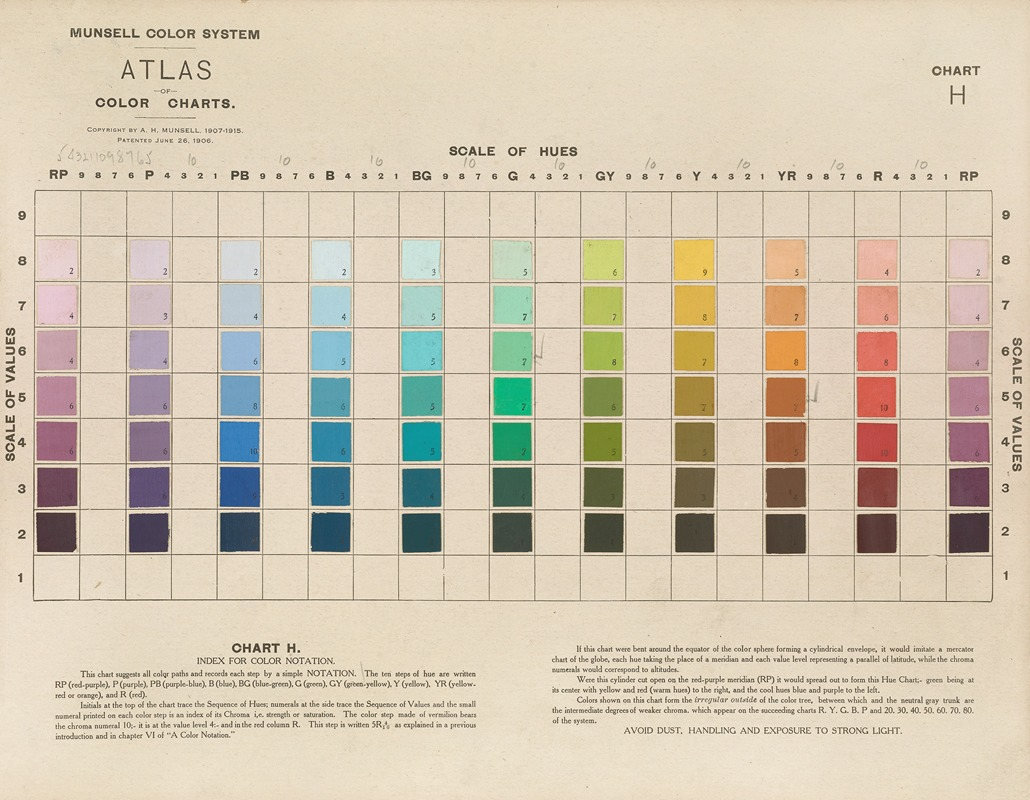

Hue in the Munsell Color System refers to the quality of color that we typically identify by names like red, blue, or green. Munsell color theory categorized hues into five principal categories—Red, Yellow, Green, Blue, and Purple—and five intermediate ones, such as Yellow-Red, Green-Yellow, etc. This classification forms a circular arrangement. His hue circle is akin to a color wheel. The Munsell color wheel allows for easy identification and comparison of hues.
Munsell Value Scale — Concept of Lightness and Darkness in Colors
Value in Munsell’s color wheel measures the lightness or darkness of a color. It’s scaled from 0 (absolute black) to 10 (pure white), with various shades of gray in between. This vertical axis in the Munsell color space allows for an accurate and consistent depiction of a color’s brightness. Bright colors are defined independently of their hue and chroma.
Munsell Chroma Scale — Understanding Color Purity or Intensity
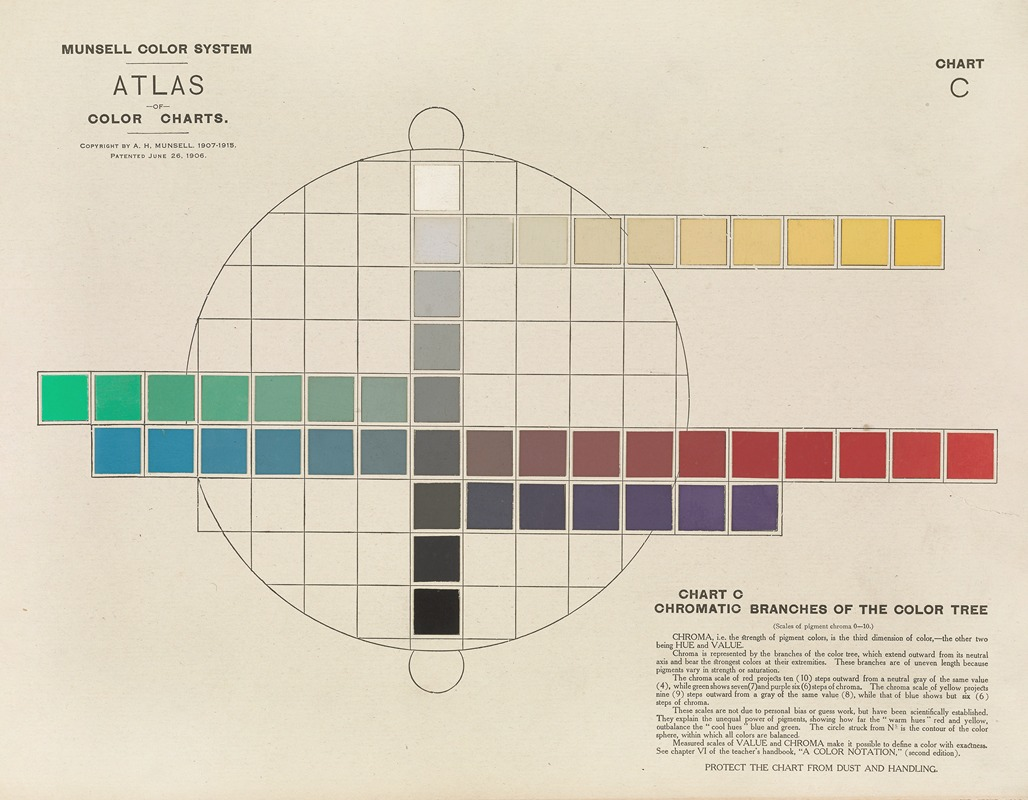

Chroma, or saturation, indicates the purity of a color. It measures how much a hue deviates from a neutral gray of the same value—extending radially from the center of the Munsell colors sphere (representing neutral gray) outwards toward more vivid colors. High chroma colors are pure and intense, while low chroma colors are more muted.
Deciphering Munsell Notation
Munsell notation is a way to specify colors in each Munsell color chart of the Munsell Color System—a color classification method that categorizes colors based on three dimensions: hue, value, and chroma. Each color in this system is described using a specific notation that corresponds to these three dimensions.
Hue is represented by a letter/number combination—indicating its position in the color wheel. The Munsell system divides the hue circle into five principal hues (Red, Yellow, Green, Blue, and Purple) and five intermediate ones (Yellow-Red, Green-Yellow, Blue-Green, Purple-Blue, and Red-Purple). Each of these hues is further subdivided, and the position within these subdivisions is indicated by a number. For example, “5R” would mean the hue is in the middle of the Red category.
Value is indicated by a number that follows the hue notation and ranges from 0 (pure black) to 10 (pure white). This number represents the lightness or darkness of the color. For instance, “5R 6/” would indicate a Red hue with a mid-range value of lightness.
Chroma is noted as the last number in the sequence and represents the purity or intensity of the color. Higher numbers indicate more intense, pure colors, while lower numbers are more muted or grayish. In our ongoing example, “5R 6/8” would mean a Red hue of medium lightness and moderately high chroma.
So, a complete Munsell notation like “5R 6/8” precisely identifies a color in terms of its hue, value, and chroma—allowing for accurate and consistent color communication as a three-dimensional representation.
Visual Representation of the Munsell Color System: The Munsell Color Tree
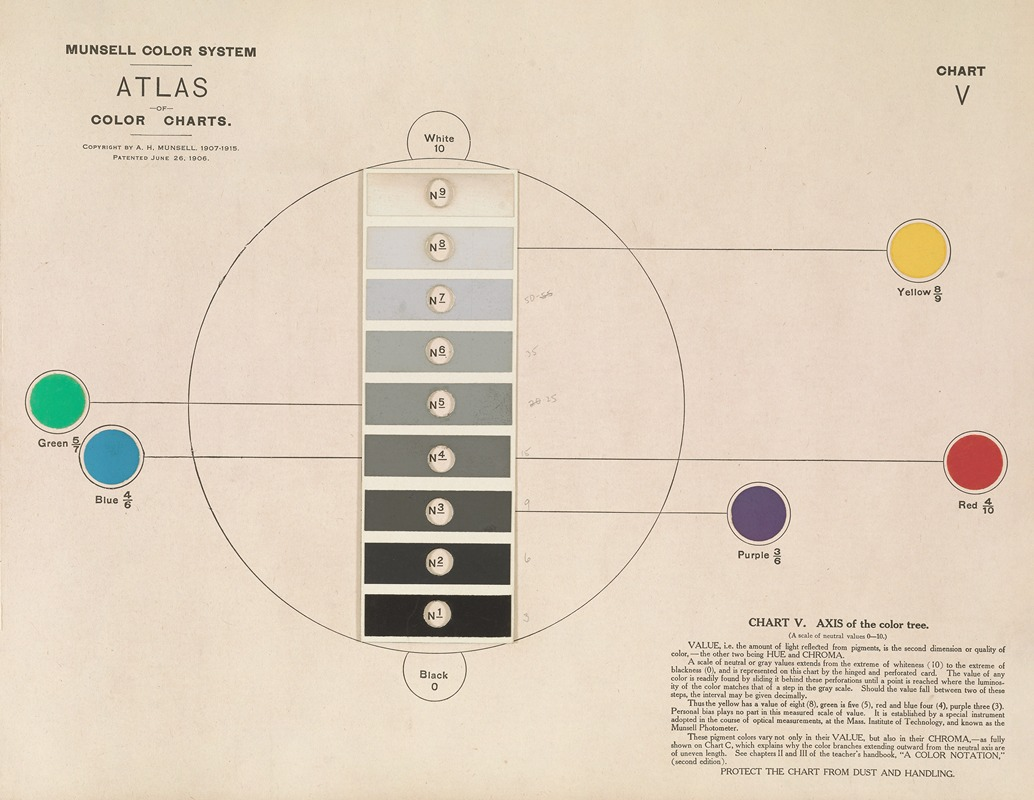

The Munsell Color System is often depicted as a three-dimensional color tree, where each color can be precisely located. This tree visualizes hues as angular positions around the trunk (circle of hues), values as vertical positions (from black at the bottom to white at the top), and chroma as the distance from the trunk (color purity). This representation is particularly effective in illustrating the relationship between colors and their three-dimensional aspects—making it a practical tool for both artists and scientists.
Comparison with Other Color Systems
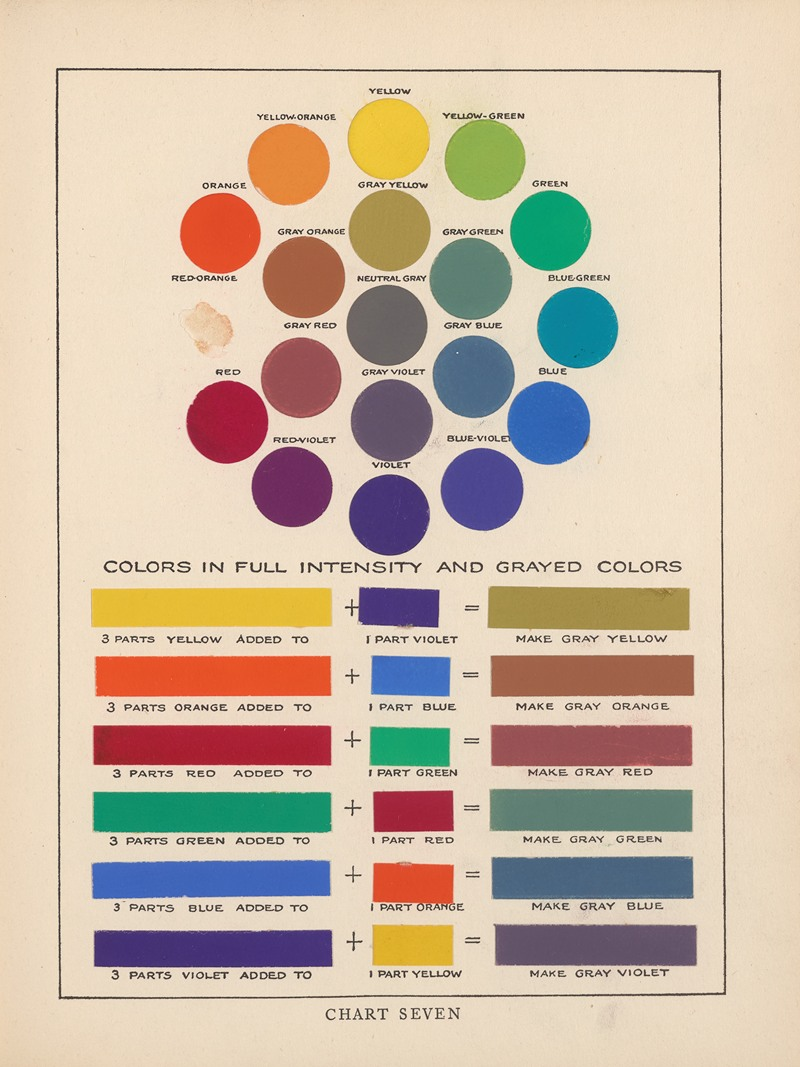

When compared to other color systems like RGB (Red, Green, Blue) and CMYK (Cyan, Magenta, Yellow, Key/Black), Munsell color charts offer a more nuanced and human-centric approach to color classification. Unlike RGB and CMYK—which are based on color mixing technologies for screens and printing—the Munsell system focuses on human visual perception.
This makes it particularly useful in fields that require precise color identification and description, such as art, design, and color communication. The system’s emphasis on perceptual uniformity—where equal steps between colors appear visually equal—sets it apart from other systems that lack this level of perceptual refinement.
Munsell Color System in Practice
Early Adoption and Uses in the 20th Century
The Munsell Color System quickly gained recognition and adoption in the early 20th century—particularly in the fields of art, education, and the sciences. Its intuitive and scientifically grounded approach made it a valuable tool for artists, educators, and designers.
Early adopters praised the system for its ability to provide a clear and consistent language for color, which was especially beneficial in educational settings. Government agencies quickly jumped on the new system—especially those involved in geology.
It allowed for a more structured and understandable method of teaching color theory—bridging the gap between art and science. Additionally, the system found early applications in various industries, where precise color communication was necessary.
The System’s Influence on Color Education and Art
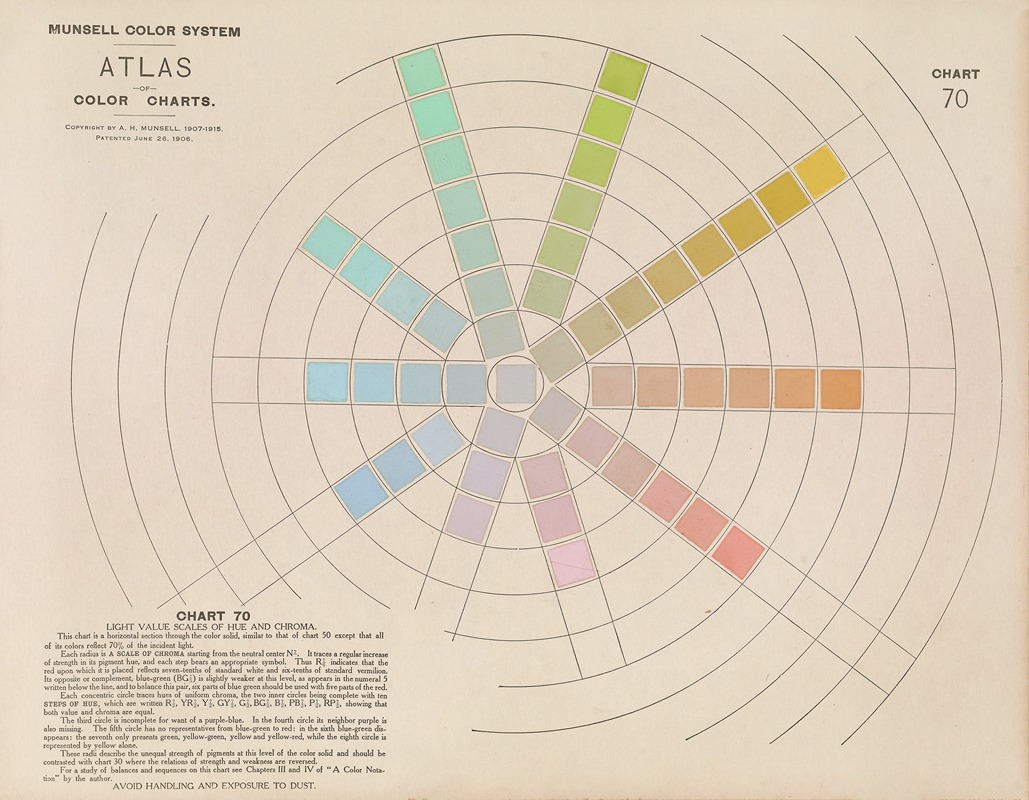

In the realm of color education, the Munsell Color System has played a pivotal role. It introduced a methodical way to understand and communicate color. This clarity and precision in color education have influenced generations of artists and designers—enabling them to explore and utilize color with greater confidence and understanding.
The system’s emphasis on the three-dimensional aspect of color—hue, value, and chroma—has also enriched artistic practices—providing a more comprehensive toolkit for artists to express their visions effectively.
Standardization in Industries and Scientific Research
Beyond the arts, the Munsell Color System has been instrumental in standardizing color in various industries and scientific research. Its precise and uniform approach to color classification made it an invaluable resource in areas such as manufacturing, where consistent color quality is crucial. In scientific research—especially in fields like environmental science and geology—the system provides a standardized method for recording and analyzing color data.
For instance, it’s widely used in soil classification—helping scientists communicate and compare findings accurately. The system’s broad adoption across diverse fields underscores its versatility and enduring relevance in both practical and research-oriented applications.
Modern Applications of the Munsell Color System
Use in Digital Design and Color Matching Technologies
In the digital realm, the Munsell Color System is frequently utilized in color matching technologies and digital design. Its precise color categorization allows for accurate color reproduction in digital media—an essential factor in graphic design, digital art, and online branding.
Color matching software often references Munsell standards to ensure consistency across various digital platforms and devices. This application is crucial in industries where color accuracy is paramount—such as in digital advertising and web design—ensuring that the intended colors are accurately displayed on different screens.
Role in Environmental Design and Urban Planning
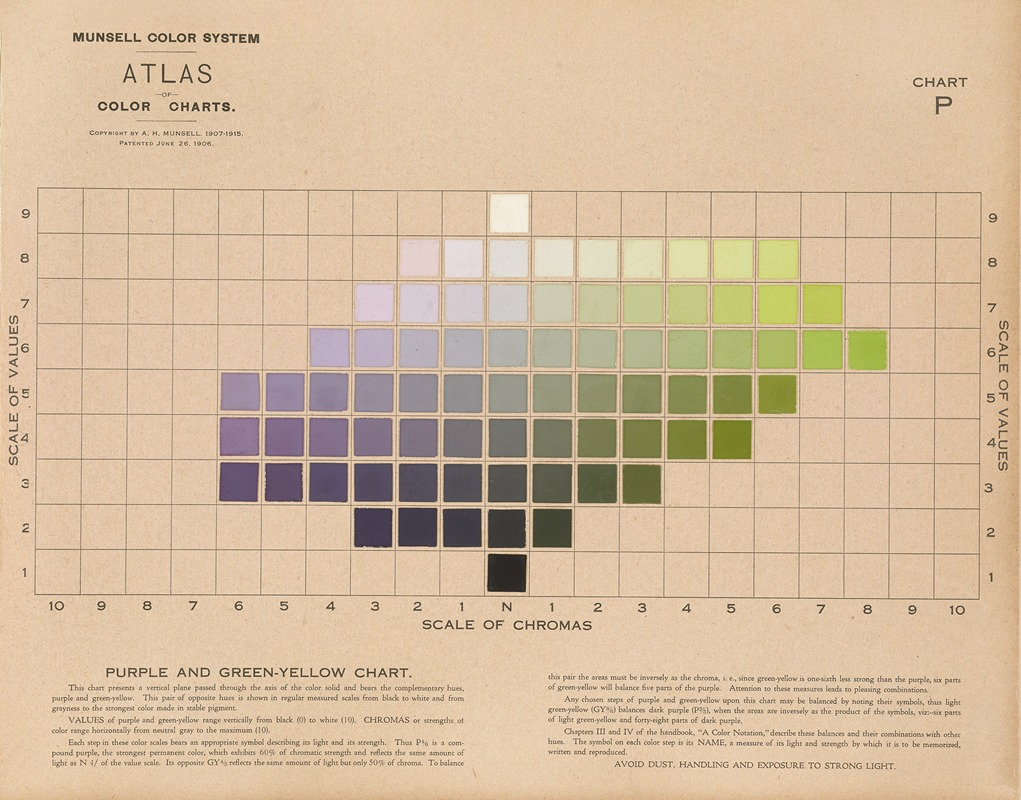

The Munsell Color System also plays a significant role in environmental design and urban planning. Its detailed color specifications aid architects and urban planners in selecting and coordinating colors for public spaces, buildings, and landscapes.
This system allows for a harmonious integration of man-made structures into their natural surroundings or—conversely—enables the creation of vibrant, engaging urban environments. The precise color notation of the Munsell system ensures that the envisioned aesthetic and psychological impacts of color schemes are effectively realized in physical spaces.
Application in the Cosmetic and Fashion Industries
In the cosmetic and fashion industries, the Munsell Color System is used for product development and color trend analysis. Its detailed color classification helps in creating a wide range of cosmetics that cater to diverse skin tones and preferences.
In fashion, designers use the Munsell system to develop color palettes for their collections—ensuring a cohesive and aesthetically pleasing range of garments. The system’s ability to define and communicate colors precisely makes it an invaluable tool in these industries, where color is a key element of style and branding.
Importance in Soil Classification and Geological Studies
The Munsell Color System is notably significant in soil classification and geological studies. Soil scientists rely on the system to accurately describe and classify different types of soil based on color—an important indicator of composition, condition, and potential use of the soil.
In geology, the system aids in the identification and analysis of rock and mineral samples. The standardized color measurements provided by the Munsell system enable consistent documentation and communication of findings—facilitating collaboration and comparison in scientific research across the globe.
Challenges and Critiques
Limitations of the Munsell Color System
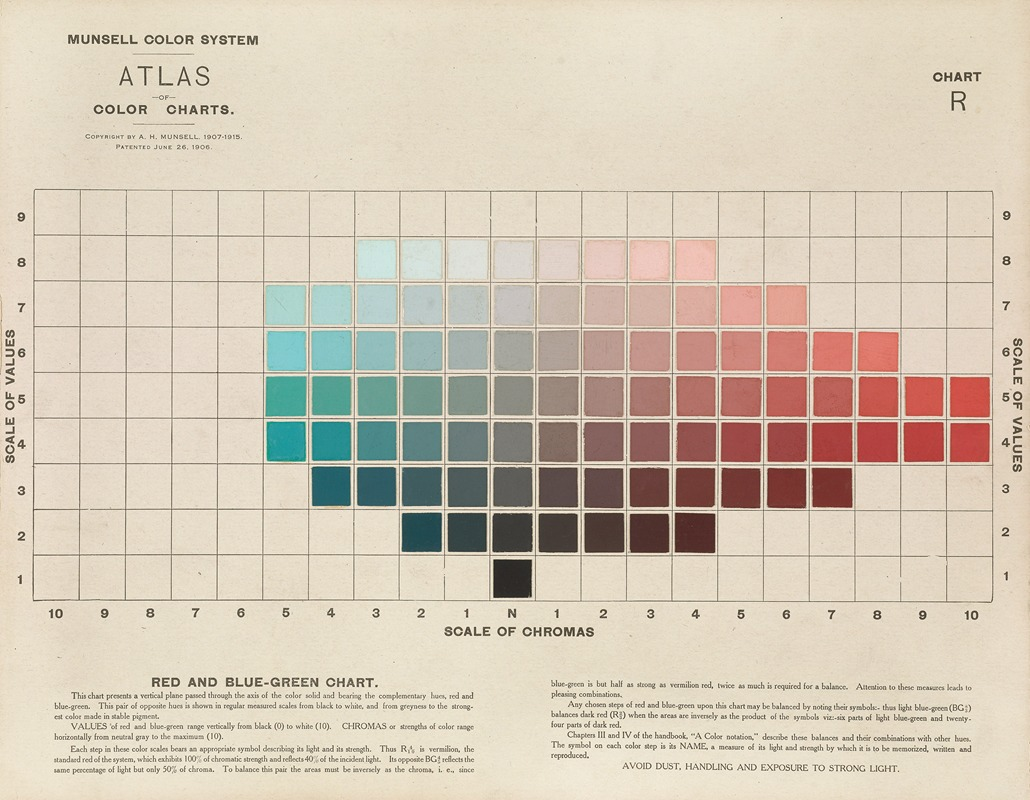

While the Munsell Color System has been widely acclaimed for its systematic approach to color classification, it is not without limitations. One notable challenge is its complexity. The system’s detailed nature can be overwhelming for beginners and non-specialists.
Moreover, the Munsell system—primarily based on human visual perception—may not always align perfectly with digital and print color models like RGB and CMYK—leading to challenges in color reproduction across different media. Additionally, the system’s reliance on physical color charts can pose limitations in terms of accessibility and practicality in rapidly evolving digital-centric environments.
Modern Adaptations and Improvements
In response to these challenges, modern adaptations and improvements have been made to the Munsell Color System. These include the development of digital tools and software that integrate the Munsell system for easier and more accurate color referencing and matching in digital applications.
Efforts have also been made to simplify the system for educational purposes—making it more accessible to students and emerging professionals in various fields. Additionally, advancements in printing and material technology have allowed for more accurate and durable representations of the Munsell color standards.
Comparative Analysis with Newer Color Systems
When compared to newer color systems, the Munsell system stands out for its focus on human visual perception—an aspect that is often less emphasized in other models. Systems like RGB and CMYK are tailored more towards technological reproduction of color—RGB for screens and CMYK for printing.
While these systems are integral in digital and print media, they lack the perceptual uniformity that Munsell offers. However, the newer systems provide more straightforward models for color manipulation in software, which can be more intuitive for digital-centric applications.
Final Thoughts on Munsell Color Charts
The Munsell Color System—developed over a century ago—continues to hold a significant place in the realms of art, science, and industry. Its impact and legacy are evident in its widespread adoption and enduring influence—particularly in fields requiring precise color communication and analysis. The system’s structured approach to hue, value, and chroma remains a cornerstone in contemporary color theory and practice—bridging the gap between subjective color perception and objective color categorization.
Design Dash
Join us in designing a life you love.
-
All About Our 7-Day Focus & Flex Challenge
Sign up before August 14th to join us for the Focus & Flex Challenge!
-
Unique Baby Names Inspired by Incredible Women from History
Inspired by historic queens, warriors, artists, and scientists, one of these unusual baby names might be right for your daughter!
-
Finding a New 9 to 5: How to Put Freelance Work on a Resume
From listing relevant skills to explaining your employment gap, here’s how to put freelance jobs on your resume.
-
What is Generation-Skipping, and How Might it Affect Sandwich Generation Parents?
The emotional pain and financial strain of generation skipping can be devastating for Sandwich Generation parents.
-
Four Material Libraries Dedicated to Sustainability, Preservation, and Education
From sustainable building materials (MaterialDriven) to rare pigments (Harvard), each materials library serves a specific purpose.
-
Do You Actually Need a Beauty Fridge for Your Skincare Products? (Yes and No.)
Let’s take a look at what dermatologists and formulators have to say about whether your makeup and skincare belong in a beauty fridge.








